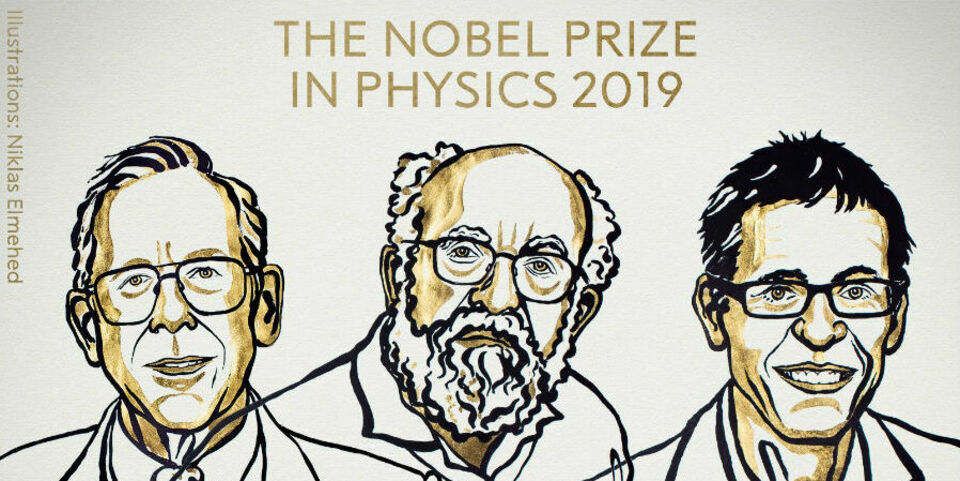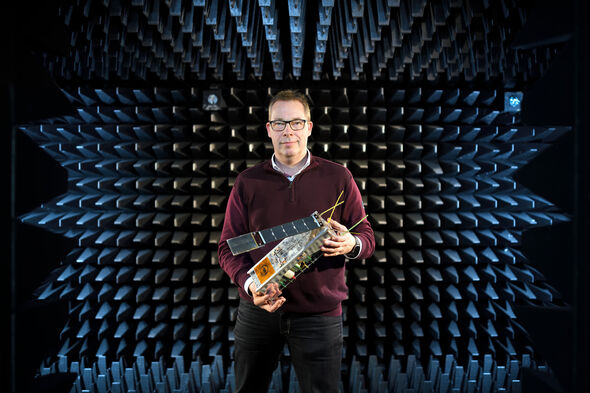“Nobel prize is great for radio astronomy”
This year, the Nobel prize in physics goes to two groundbreaking discoveries in cosmology: new insights into the evolution of the universe, and the discovery of the first planet in orbit around a star beyond our solar system. This was announced by the Nobel Committee last Tuesday. Professor in Radio Science at TU/e Mark Bentum, who follows in the footsteps of the three winners with his own research, is enthusiastic that the prize has been awarded in his field.
Half of the Nobel prize was awarded to the Canadian James Peebles, who made a groundbreaking theoretical discovery in the sixties that turned cosmology into an exact science, the committee says.
Our universe was born about 14 billion years ago with a huge explosion: the big bang. The radiation that was released as a result is still detectable. Peebles discovered how we can gain an understanding of what the early universe looked like thanks to this cosmicmicrowave background. This also resulted in the realization that we can only detect five percent of the universe. The rest is dark matter and dark energy.
TU/e professor Mark Bentum is an expert on radio signals - the type of radiation Peebles realized could offer us an insight into the evolution of our universe. Naturally, Bentum is very enthusiastic about the Nobel prize for the Canadian octogenarian. “Many people say that Peebles should have won the Nobel prize back in 1978 together with Robert Wilson and Arno Penzias, who received the prize for their discovery of cosmic microwave background. After all, Peebles and Robert Dickie had already predicted the existence of this radiation.”
The dark ages
The professor at the Department of Electrical Engineering is working on a project that will enable him to better identify the distribution of cosmic microwave background using a swarm of nano-satellites. “That way, we hope to learn more about the period before the formation of the first galaxies. That period is known as the ‘dark ages.’”
The other half of the Nobel prize goes to Michel Mayor and Didier Queloz from Switzerland for their discovery in 1995 of the very first exoplanet orbiting a sun-like star. Exoplanets do not orbit around our sun, but around other stars. Over four thousand exoplanets have been discovered since.
Bentum explains that Mayor and Queloz detected their first planet, the Jupiter-sized ‘51 Pegasi b’, via an indirect method. “Due to the gravitational tug of a planet that size, the star around which it orbits makes slight movements periodically, which becomes apparent in the frequency with which the star emits radiation. This is caused by the so-called Doppler effect.”
Signals outside our solar system
Bentum is currently searching for more direct observations of exoplanets by looking at the interaction between the solar wind and the magnetic field of these kinds of planets, he explains. “It’s possible to detect the effects of this interaction for planets within our solar system, such as Jupiter, Neptune and Saturn, but we want to develop an instrument with which we can also find these signals outside our solar system. This doesn’t just prove the presence of an exoplanet, but also that it has a magnetic field, like Earth. That’s considered an important requirement for the possibility of life.”
Bentum emphasizes that the abovementioned projects are carried out within the Center for Astronomical Instrumentation (CAI), a collaboration between TU/e and Radboud University Nijmegen that started last month. “They do the ‘science’ and we are the engineers. We complement each other quite well.”



Discussion